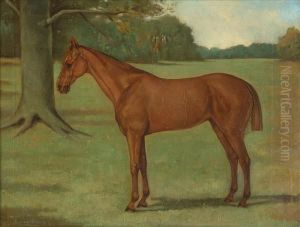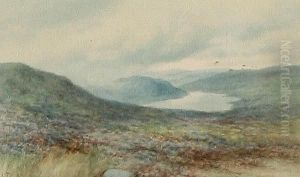William Carlisle Baillie Paintings
Captain William Baillie, often known simply as William Baillie, was an Irish artist, known for his work as a printmaker and antique dealer. Born in 1723 in Kilbride, County Carlow, Ireland, Baillie began his career not in the arts, but in the military, ascending to the rank of Captain in the British Army.
Despite his military background, Baillie had a strong passion for art, particularly in the realm of printmaking. After retiring from the army in 1761, he devoted himself to his artistic pursuits. He was not only a creator but also a collector and connoisseur of prints. His work often involved reworking prints and plates by earlier artists, including Rembrandt and Claude Lorrain, showing a particular fascination with old masters.
Baillie's process sometimes involved burnishing out the works of others and adding his own work to the plate, effectively creating 're-interpretations' of classic artworks. While this would be controversial by today's standards of conservation and art history, in the 18th century, it was not uncommon for artists to rework plates created by their predecessors. Baillie's prints were well-regarded, and his skill in capturing the essence of the original artist while imparting his own style was admired by his contemporaries.
By the late 18th century, Baillie had become more of an art dealer than a creator, using his extensive knowledge of prints and his collection to support himself. He sold his collection in 1792, which was a significant event in the art world at the time. William Baillie died in 1810, leaving behind a legacy that is a complex blend of respect for his knowledge and artistic skill, and critique for his liberal approach to the reworking of classic prints. Today, art historians value his prints as a window into the practices and attitudes towards art conservation and reproduction in the 18th century.

